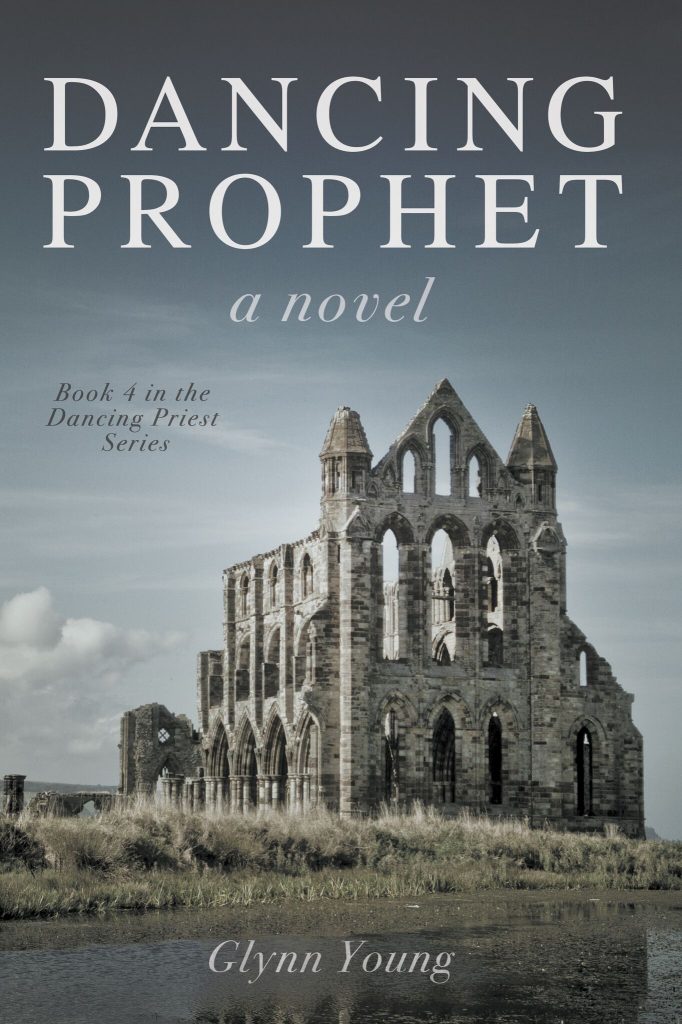
My wife has said, more than once, that the main character in my Dancing Priest novels is an idealized version of me. The first time she said it, I disagreed. There were some things I shared with that character, but I never planned to write about making an idealized version of me.
After considering it, I thought, well, maybe. I thought about it some more, and I reverted to my original thought. Nope, he’s not me.
Not one of the characters across my four novels are disguised versions of real people. Instead, they are composites of people and experiences.
In Dancing Priest, Sarah Hughes has a conversion experience that is almost exactly taken from my own.
In A Light Shining, the political operative Josh Gittings is based on several people I’ve known from the political world.
The communications man in Dancing King is based on many of my career experiences, especially in crisis communications. His uncanny ability to spot what’s happening and ferret out what’s behind a crisis is based on too many of my own experiences. (I say “too many” because sometimes I was heeded, and sometimes I was not.)
And certainly the speechwriter in Dancing Prophet comes from my own career background, including sitting with an executive for an entire day to write an emergency speech while he did other work.
I can say my characters come from experiences, but where do their personalities come from? Likely our families, our friends, people who’ve influenced us or protected us, mentors, people we’ve have bad experiences with, even casual acquaintances.
For example, the villain in Dancing King, the PR operative Geoffrey Venneman, is a composite of several people I’ve known over the years. He serves his clients, yes, but he is all about serving himself. He looks for the main chance. He has no qualms about hurting others and that, in fact, is part of the game. He can affect a wounded innocence when it’s helpful to do so. His anger becomes uncontrollable when he’s thwarted. Yes, I knew people like this and had to work with them. It was not a pleasant experience, because you always had to be on guard.
In the writing process, however, I don’t consciously create characters. They seem to emerge as the story develops or when this kind of character is needed. Sometimes I know what kind of character is needed at a particular point, but the birth is an agonizing labor, requiring rewrite after rewrite.
I’ve had one exception to my “no real people” guideline. In Dancing Prophet, one character is based on me, less his experiences and more his personality. I admit it. Almost all of his actions and reactions in the book track with mine (that’s almost all, not all). I didn’t realize this until I was in the middle of rewrite #2 or #3, and then I saw it. The character had emerged, unconsciously, from my own life. He’s not an idealized version of me. In many ways, he is me.
It was a shock. For a time, it stopped all progress on writing the book. I had to take stock. What was I trying to say here, or understand? Was I trying to tell myself something? I had to try to answer these questions and others before I could continue.
The answer I came to was this: this character feels broken. It doesn’t stop him from having a successful career and a loving marriage. But it shapes him in obvious and less-than-obvious ways. And sometimes, in the midst of that brokenness, a character has to step forward and do something courageous.
No one ever said that writing would be this hard. No one ever said it would be this revealing.
Photograph by Hudson Hintze via Unsplash. Used with permission.


 Writing a fiction series seems to have become popular in the 19thcentury. It’s not the same thing as serial publication, which is how Charles Dickens published his novels – a chapter per issue of a periodical. One of the best-known series in the 19thcentury was the Chronicles of Barsetshire by
Writing a fiction series seems to have become popular in the 19thcentury. It’s not the same thing as serial publication, which is how Charles Dickens published his novels – a chapter per issue of a periodical. One of the best-known series in the 19thcentury was the Chronicles of Barsetshire by  What happened was this: as I constructed what became the world of Michael and Sarah Kent-Hughes, the construction grew, it expanded over time, it became more elaborate and detailed, and it became too big to be contained in only a single book. What was one rather large manuscript was transformed into four novels.
What happened was this: as I constructed what became the world of Michael and Sarah Kent-Hughes, the construction grew, it expanded over time, it became more elaborate and detailed, and it became too big to be contained in only a single book. What was one rather large manuscript was transformed into four novels.
 The kidnapper was a man named
The kidnapper was a man named  In 2012, in a conversation with my publisher about writing life after A Light Shining, I mentioned this story. A few days later, he sent me a press story from England. A small pedophile ring had been uncovered within the Church of England. He wanted to know if I had “pre-written history.”
In 2012, in a conversation with my publisher about writing life after A Light Shining, I mentioned this story. A few days later, he sent me a press story from England. A small pedophile ring had been uncovered within the Church of England. He wanted to know if I had “pre-written history.”